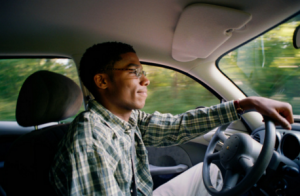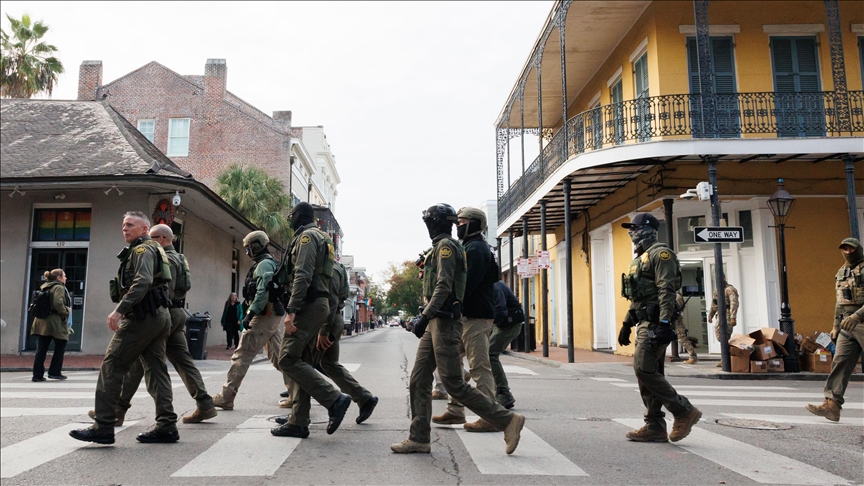(ThyBlackMan.com) You have a life to live regardless of the weather. There are kids to drive to school, roads to take to work, and remote errands to complete. However, a significant number of drivers fall victim to wintertime accidents due to weather conditions and the negligent actions of other drivers. A select group remain safe regardless of the inclement of the weather. Here’s how to be one of them.
Spinouts
Most spinouts occur during turns and curves in the road. While some slips seem unavoidable, most spinouts can be missed by slowing down. Slow down well before a turn rather than waiting to hit the brake in the middle of a bend in the road. Moreover, be aware of certain areas that will feature slippery surfaces like a bridge or overpass. Staying aware of one’s speed may be one of the easiest and best ways to remain safe when driving in bad weather.
Snowplows
It’s normal to feel anxious when driving behind a big, slow moving  vehicle, such as a snowplow. However, don’t assume the plow driver can see you, and don’t get too anxious to pass unless you’re sure the driver sees you. What’s worse about passing is that the plow is throwing loose snow to the sides, which makes it trickier to get by safely. Sometimes it is safer to just wait it out.
vehicle, such as a snowplow. However, don’t assume the plow driver can see you, and don’t get too anxious to pass unless you’re sure the driver sees you. What’s worse about passing is that the plow is throwing loose snow to the sides, which makes it trickier to get by safely. Sometimes it is safer to just wait it out.
Sticky Spots
You’re lucky if you can avoid getting through the winter season without getting stuck in the snow. However, with a bit of technique, it’s pretty easy to get out of a sticky situation. Start to rock the car back and forth until you generate enough motion to propel out of a stuck position. Furthermore, you may need to dig yourself a pathway for leverage. Pack a small shovel along with other winter needs like a blanket, road flare, dry clothes, etc.
Ice Spots
Black or glare ice is notorious for causing accidents. Unfortunately, such surfaces are hard to detect and the best defense is staying off the roads during emergency conditions. If you find that you are on a patch of ice, do not hit the brakes but slowly take your foot off the accelerator. Find a safe spot to park your car and wait for better driving conditions. Do not pull off to the shoulder of the road, for this is a very unsafe place where other drivers may not see you. If you’re wrongfully injured in a roadside mishap, read about your legal options at www.mbpersonalinjurylaw.com.
Wet Roads
Aside from icy roads, wet roads pose serious danger. However, there are ways to dramatically lessen the chance of an accident. First, realize that your tires have less traction, so increase the distance between other drivers, and give yourself more time to brake at stop lights and signs. Furthermore, be aware that surfaces will be most slick immediately following rainfall. Hydroplaning is the wet condition equivalent to driving on black ice. Similarly, if you feel as if the tires don’t have contact with the road, take your foot off the accelerator and steer toward a safe place.
Changing wiper blades every six months also ensures you’ll have higher visibility.
Snow Tires
Those who live in regions that get a lot of snowy weather may consider investing in snow tires. It’s an added investment, but it shouldn’t take long for a mechanic to switch out the tires in the fall and then again in the spring. Moreover, a pair of snow tires should last for several snowy seasons. It’s not necessary, yet the added traction makes drivers feel safer, as they have more control over road conditions.
Driving at Night
Driving at night is more dangerous for several reasons, lower visibility being the most obvious. Of course, one should account for lower visibility by driving at lower speeds and by making use of accessories such as prescription night driving glasses so as to enhance your vision no matter the conditions. Moreover, be mindful of using your high beams amid oncoming traffic situations. Do not look directly into the lights of others so as to avoid temporary blindness, a common cause of bad weather accidents. Drunk driving is more prevalent at night. Be mindful of the driving of others. Keep safe distances and don’t hesitate to report erratic driving.
Foggy Conditions
Making road conditions even worse, winter rain, sleet, and snow can be combined with fog, which makes it very difficult to see in time to come to a complete stop. Using high beams in foggy conditions is one of the biggest mistakes made by drivers; it actually decreases one’s ability to see. Use low beam or fog lights along with your regular lights when driving in fog whether it’s day or night.
Staff Writer; Peter Love
















BEFORE POSTING, HOPEFULLY March 20, 2020 will be the last time I’ll post on Internet as I’ve been trying to quit posting-I had not posted since Sept. 10, 2019 but posted on March 19, 2020 and now March 20, 2020. ADDED THOUGHTS AND EDITS:
Yes, good information given regarding driving in snow. Yes, people must do things slower when you have heavy snow. Snow and cold weather is more fun, if 1 knows what to do.
I wish that forecasters would stop foregasting or weatherwashing. What exactly is foregasting and weatherwashing? Foregasting is when the forecaster talks negatively or passes gas and poos on snow and cold weather. Now while optimal weather is when it’s 50 to 74 Degrees Fahrenheit with 60s Fahrenheit being the best, we love snowfall and cold weather including visiting the lakes and rivers when they’re frozen. While I would visit Hawaii and Florida in December if given a chance, I wouldn’t want to live there because I like snowfall, cold weather and frozen lakes.
Weatherwashing is when the forecaster tries to mindwash or brainwash the viewers into thinking that everybody loves summer and hates winter. That’s rubbish. There are many people who hate summer and love winter, because I am some1 who hates hot weather and likes cold weather.
Forecasters must stop foregasting which is stop negatively talking about snow and cold weather because those forecasters are passing gas and pooing on snow and cold weather. If you see forecasters opining rather than neutrally reporting the weather, then call the station to complain. There are many people who hate hot summer weather and if you see forecasters foregasting and weatherwashing rather than just neutrally report, then call the forecaster to complain about that.
Especially when you don’t have a White Christmas and then when it snows, the forecasters complain about the snow. I have in past called Accuweather’s main corporate office to complain if I saw forecasters getting too negative when it came to snow and cold weather.
While I like snowfall and cold weather, I may be more tolerant if let’s say we had week after week of sub zero temperatures and heavy snowfall and a forecaster says that they’d like to have a break from the snow, if they say it’s their opinion only. I also may be tolerant if the forecaster says it is their view but that not all share their view.
But what gets dull is when the forecaster tries to weatherwash (brainwash or mindwash) people into thinking that everybody shares their view and tries to impose their view on others. It also gets dull to hear forecasters complaining about the snow and cold weather when let’s say a place has not had much cold winter weather (such as a place didn’t get a White Christmas) and then the forecaster complains when that place gets snow and cold weather. Forecasters need to stop passing gas and pooing on snow and just report snow and cold weather. Forecasters need to talk more about the fun activities in snow, cold weather and frozen lakes.
Forecasters need to stop passing gas and pooing or talking negatively about snow and cold weather. I’ve noticed that when snow and cold weather are reported it’s often negatively done or when they talk about the fun activities in snow, they often try to give views of those who hate snow. Only once in a while have I found it reported with fun, though it’s sometimes neutral. With summer, only once in a while do I see negative reporting about hot weather.
With any weather reporting weather it’s cold weather, hot weather, cool weather or snow, forecasters should just neutrally report & not give opinions. Now of course, the forecasters should give safety precautions such as driving in snow or what to do in blizzard conditions, heavy rains, etc. but just be neutral. If a person including forecaster talks negatively about snow and cold weather, then they don’t appreciate the seasons changing, because snow is fun @ any age. It’s more fun to be cold.
Other things to regard. If a person lived in Chandler Arizona or Miami Florida and moved to a place which has seasons change such as Utah, Michigan, MN, etc. the right thing to do is ask them-do you like snow, cold weather and seasons changes? I write this because I have had people who rather than ask me if I like the seasons changes, talk negatively (pass gas and poo or foregast)on snow & cold weather. Yes, people have different views on the weather but to me, it is rude to start the conversation by making negative comments about snow and cold weather without asking me what I like. @least ask us-do you like snow, cold weather and seasons changes?
If a person moved out of Phoenix Arizona or Miami Florida, then it’s possible the person moved out because they didn’t like the hot weather in Phoenix Arizona and Miami Florida. Just because a person lives in Chandler Arizona, that doesn’t mean the person likes the place. Just as not all the people who live in cold weather places like the place’s weather, there are people who live in hot weather places such as Phoenix Arizona who don’t like Phoenix’s hot weather. I used to live in Chandler Arizona and I hated the hot summers there and was glad to move out to a place which has seasons change. There are people who lived in Phoenix Arizona but moved out because they hated the hot Phoenix Arizona weather to somewhere with seasons change such as Utah and Colorado. Before you opine, @least ask the person if they like snowfall, cold weather and seasons changes?
Snow is fun @ any age. Whether you are 5, 25, 50 or 75 years old, snow and cold weather is fun @ any age. Yes, you must be smart, such as drive carefully and dress properly. But snow is beautiful @ any age so, snow is nice weather.
With snow and cold weather, there isn’t the beauty contest competition to be the most beautiful woman or the strongest man. Yes, you have skiing and winter sport competitions, but you don’t have to have a beauty contest for this. In snow and cold weather, tea, coffee and hot chocolate tastes better. Food also tastes better and is more fun to eat-this poster is vegetarian. You can enjoy snow and cold weather for the beauty snow has.
With summer weather, it seems that so many ugly people come out. With summer weather, if a person is let’s say under 40 years old such as 35 or younger, then the person looks fine. But when you see people over a certain age, it seems alot of ugly people come out in the summertime. With summer, there is the beauty contest competition for a woman trying to have the beautiful swimsuit body and if it’s a man, the competition contest to be the muscle man or strongest man. It seems that with summer, people seem to want that beach body but most people don’t have that so many people just don’t meet this reqt.
With summer, when 1 sees old people, etc., it seems that people who are past prime or ugly people come out in warm weather, which shows just how ugly warm weather is. Also with summer, you see rainbow flags flying & if a person’s flying a Rainbow flag, then whether they realize it, the rainbow flag which calls for among other things lowering the consent age. Bugs, mosquitoes, rainbow flags & ugly people seem to come out more in the warm summer weather.
Cold winter weather is just more fun and you can enjoy snow just for snows beauty. While again, optimal weather for me is when it’s 50 to 74 Degrees Fahrenheit with 60s Fahrenheit being the best, I like snowfall November through April, especially December through February. We also like visiting the lakes and rivers when they’re frozen and sub zero Fahrenheit air temperatures can be fun. Snow is fun and visiting the lakes when they’re frozen is much more enjoyable than going in the summer time, when it’s crowded sometimes with people who are too old. Just seems that more old and sometimes ugly people come out in the summertime. Snow and cold weather are more fun.
I hope this is the last time I comment on Internet as I’ve been trying to quit and said on Sept. 10, 2019 that it would be the last time but here it goes.
Yes, good ideas on how to drive in snow, because if you aren’t careful, you could get into wreck. Drive slowly in snow.
That said, I wish that forecasters would stop foregasting or weatherwashing. What exactly is foregasting and weatherwashing? Foregasting is when the forecaster talks negatively or passes gas on snow and cold weather. Now while optimal weather is when it’s 50 to 74 Degrees Fahrenheit with 60s Fahrenheit being the best, we love snowfall and cold weather including visiting the lakes and rivers when they’re frozen.
If a person including forecaster talks negatively about snow and cold weather, then they don’t appreciate the seasons changing, because snow is fun @ any age. It’s more fun to be cold. Weatherwashing is when the forecaster tries to mindwash or brainwash the viewers into thinking that everybody loves summer and hates winter. That’s rubbish. There are many people who hate summer and love winter, because I am some1 who hates hot weather and likes cold weather. Other things to regard.
Snow is fun @ any age. Whether you are 5, 25, 50 or 75 years old, snow and cold weather is fun @ any age. Yes, you must be smart, such as drive carefully and dress properly. But snow is beautiful @ any age so, snow is nice weather. Forecasters need to stop passing gas on talking negatively about snow and cold weather. I’ve noticed that when snow and cold weather are reported it’s often negatively done or when they talk about the fun activities in snow, they often try to give views of those who hate snow. Only once in a while have I found it reported with fun, though it’s sometimes neutral.
With snow and cold weather, there isn’t the beauty contest competition to be the most beautiful woman or the strongest man. Yes, you have skiing and winter sport competitions, but you don’t have to have a beauty contest for this. In snow and cold weather, hot chocolate tastes better and more fun with foo. You can enjoy snow and cold weather for the beauty snow has.
With summer weather, it seems that so many ugly people come out. With summer weather, if a person is let’s say under 40 years old such as 35 or younger, then the person looks fine. But when you see people over a certain age, it seems alot of ugly people come out in the summertime. With summer, there is the beauty contest competition for a woman trying to have the beautiful swimsuit body and if it’s a man, the competition contest to be the muscle man or strongest man. With summer, when 1 sees old people, etc., it seems that people who are past prime or ugly people come out in warm weather, which shows just how ugly warm weather is. Bugs and mosquitoes come out in the warm summer weather.
There are many people who hate hot summer weather and if you see forecasters foregasting and weatherwashing rather than just neutrally report, then call the forecaster to complain about that. Especially when you don’t have a White Christmas and then when it snows, the forecasters complain about the snow.
While I would visit Hawaii and Florida in December if given a chance, I wouldn’t want to live there. Just because a person lives in Chandler Arizona, that doesn’t mean the person likes the place. Just as not all the people who live in cold weather places like the place’s weather, there are people who live in hot weather places such as Phoenix Arizona who don’t like Phoenix weather. I used to live in Chandler Arizona and I hated the hot summers there and was glad to move out to a place which has seasons change. There are people who lived in Phoenix Arizona but moved out because they hated the hot Phoenix Arizona weather to somewhere with seasons change such as Utah and Colorado.
While again, optimal weather for me is when it’s 50 to 74 Degrees Fahrenheit with 60s Fahrenheit being the best, I like snowfall November through April, especially December through February. We also like visiting the lakes and rivers when they’re frozen and sub zero Fahrenheit air temperatures can be fun. Snow is fun and visiting the lakes when they’re frozen is much more enjoyable than going in the summer time, when it’s crowded sometimes with people who are too old. Just seems that more old and sometimes ugly people come out in the summertime. Snow and cold weather are more fun.